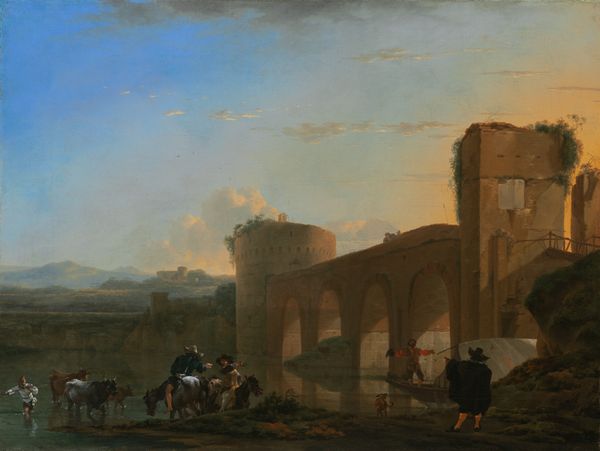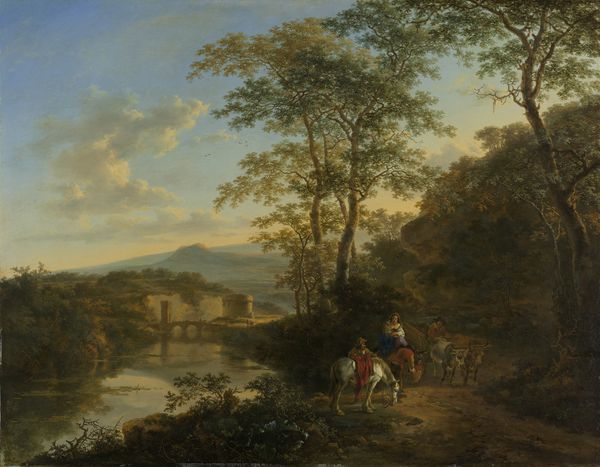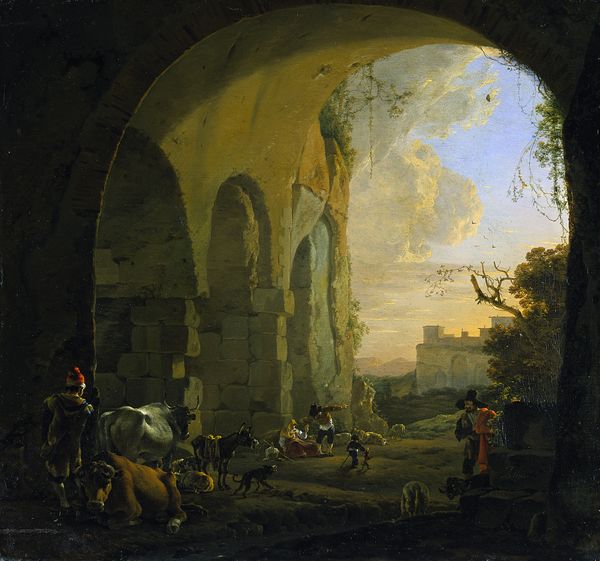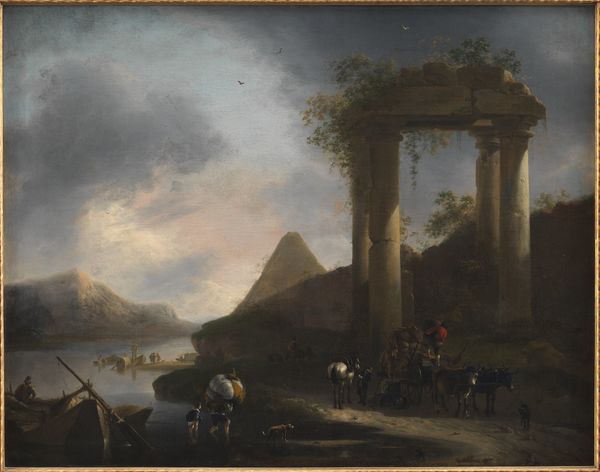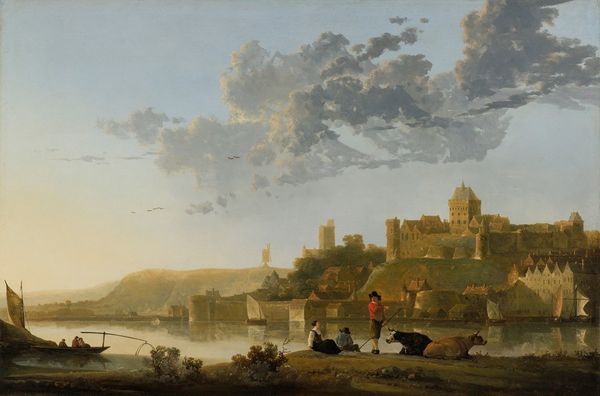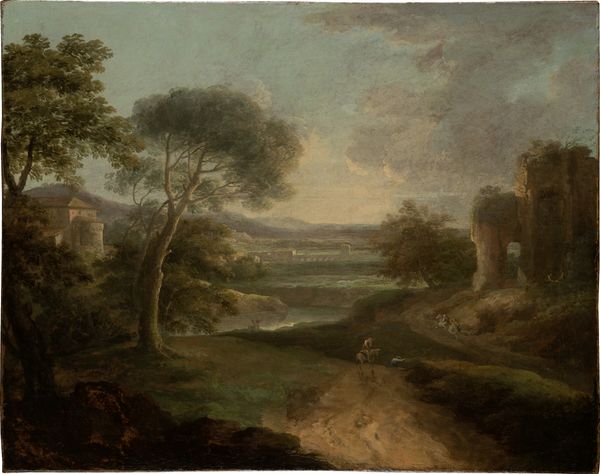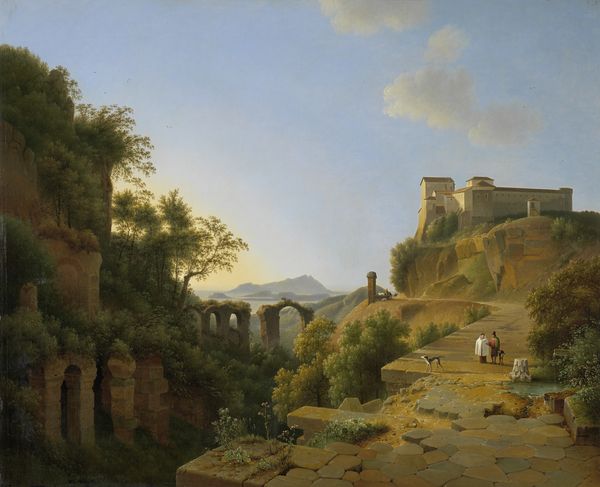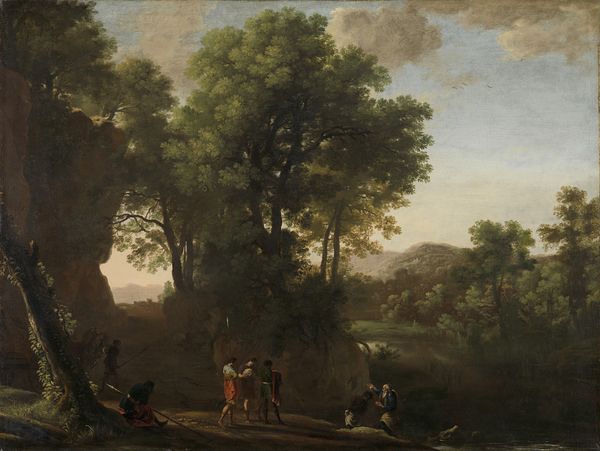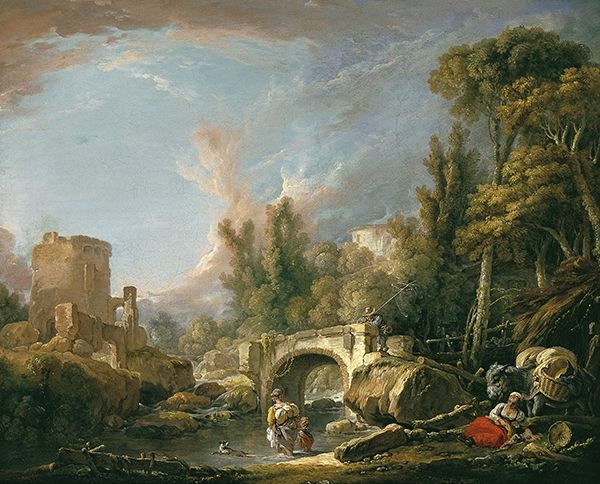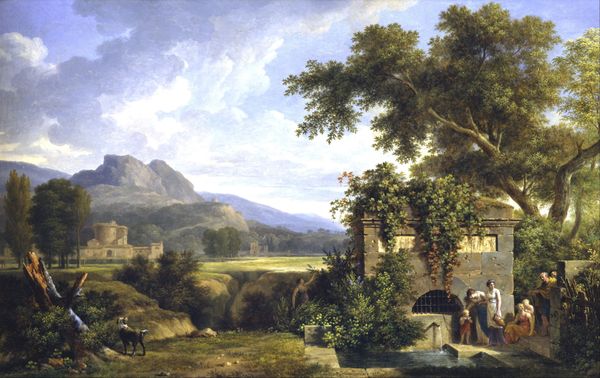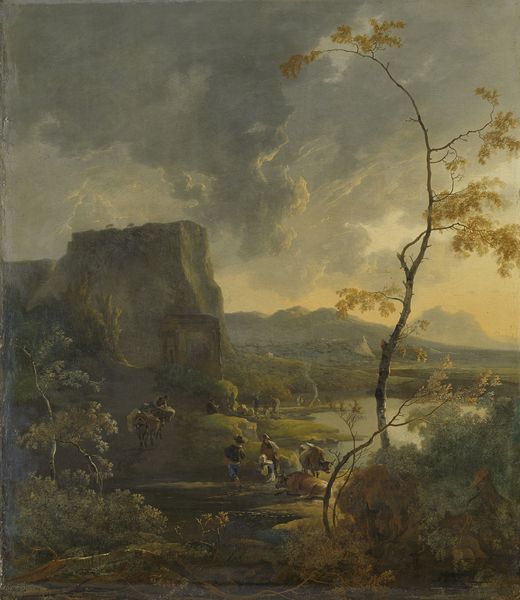
Dimensions: height 67 cm, width 82 cm
Copyright: Rijks Museum: Open Domain
Curator: Jan Asselijn’s "Muleteers beside an Italian Ruin," circa 1650. The oil on canvas resides here at the Rijksmuseum. Editor: My initial impression is one of decay juxtaposed with a kind of persistent everydayness. There’s a monumental ruin dominating the composition, yet life just continues on at its base. Curator: Absolutely, the structural contrast is central to its meaning. Notice the calculated arrangement: the geometry of the crumbling Roman architecture set against the natural forms of the landscape and the organic grouping of figures. It’s a very deliberate construction. Editor: It does appear deliberately constructed in terms of its elements, yes, but what fascinates me is how that structure relates to the materials used. These are not just picturesque ruins. Consider the sheer physical labor required to quarry and transport such enormous stones. The contemporary figures highlight the shifts in labor practices as much as style over time. Curator: A relevant observation. And beyond the figures, note how Asselijn employs light to emphasize certain planes within the ruin, creating depth and drawing the eye upward. This visual device encourages the viewer to contemplate the passage of time, from the height of the Roman empire to the present day. Editor: I find myself also dwelling on the social history embedded in these paintings. It presents a sanitized version of Italian life with tidy pathways, respectable looking animals, and none of the grimier, back-breaking work evident. What’s conveniently left out reflects back on the patronage, what viewers would pay for. Curator: Indeed, the romanticized view was surely intentional. Though I think his realism as an artist still allows a degree of appreciation today for the artistry he presented to the canvas. I remain convinced Asselijn uses this ruin, these characters as allegories for a time that, in his lifetime, became historical subject matter for a wide European market. Editor: So, while Asselijn meticulously depicts forms that are, at their essence, connected inextricably to labor and economic structures, he simultaneously reframes these realities into an elegant, easily consumable visual. Curator: A clever interpretation! Editor: Art, always something for new eyes.
Comments
rijksmuseum about 2 years ago
⋮
Asselijn had spent time in Rome, where he recorded his impressions in drawings. Once back in Amsterdam, he painted this view of a huge aqueduct. This monument to the faded glory of ancient Rome now shelters simple country folk and their herds. In the sunlight beneath one arch, a traveller is relieving himself, just like the urinating donkey in the foreground that partially conceals him.
Join the conversation
Join millions of artists and users on Artera today and experience the ultimate creative platform.
